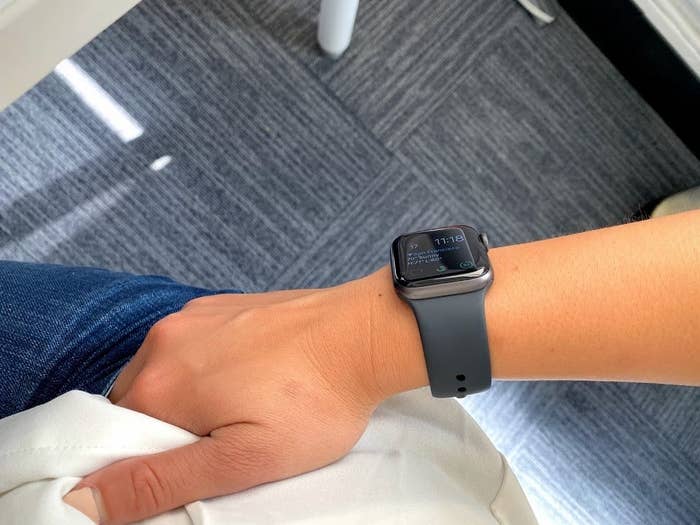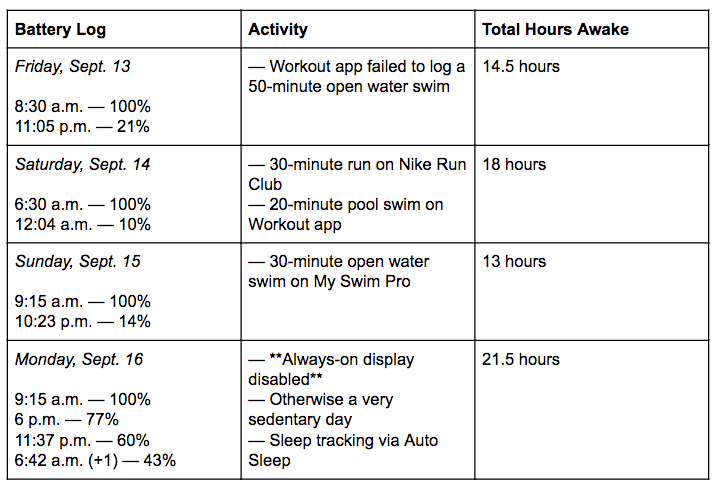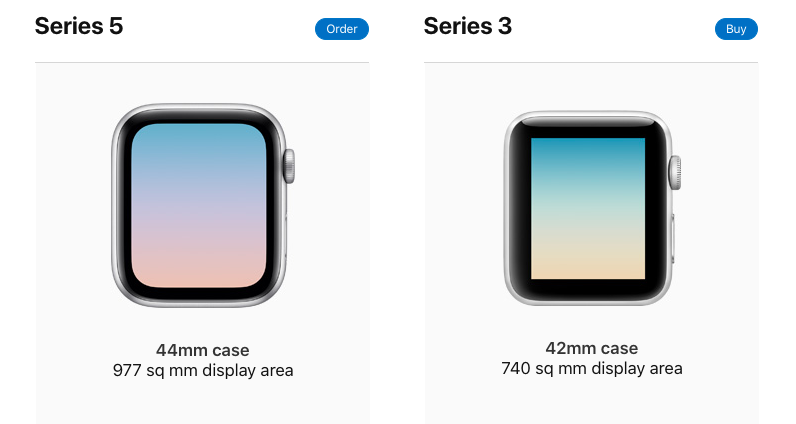
I’ve been living with various models of the Apple Watch for the last four years, and with this year’s new Series 5 for the last four days. What I’ve gleaned from testing the Series 5 is that its new features — an always-on display, increased storage capacity, faster processor, free emergency calling around the world (for the cellular model only), and compass (lol) — all make the Apple Watch a more capable, independent smartwatch.
But by far the most impactful change to the Apple Watch this year has nothing to do with the Series 5 at all. Alongside the debut of the new watch, Apple dropped the price of the perfectly capable Series 3 to a more accessible $199. For people who have always considered the $400–$500 price tag prohibitively expensive, this might be a good time to finally consider getting an Apple Watch. Just not the newest one.
If you are interested in the Series 5, there’s really only one feature worth discussing: the always-on display that finally makes the Apple Watch a bona fide timepiece. Previous models required a twist or raise of the wrist to wake the device’s screen, but the display on the Series 5 always shows the time, like a watch is supposed to. While you’re typing or exercising, the display is dim but still readable. When you raise your wrist, the screen brightens.
Being able to glance at the Series 5 meant that I spent less time gesticulating my arms.
Another (positive) side effect of the always-on display is that, when the feature is turned off, there are significant battery gains. Apple claims its latest watch’s battery life is 18 hours, which my testing found to be true. With always-on disabled, the battery lasted over 21 hours (with sleep tracking!) and was still at 43% when I woke up the next day.

Despite the much-improved battery, the Apple Watch Series 5 is still not a device you can take on a multiday hiking trip, given that it needs to be charged at least every 1.5 days.
I’m sold on the Apple Watch — but not necessarily on the Series 5. Unless you prefer (and can afford) the newest model, it doesn’t make sense to pay a premium on a device that’s still very much in progress.
I got my first smartwatch, a first-generation Apple Watch, as a gift in May 2015. There was so much not to like about the Apple Watch then. The battery life barely lasted a day, the watch needed an iPhone nearby to do just about anything, and the third-party apps were an absolute mess.
Every year since, Apple has incrementally added new features to its watch: waterproofness and swim-tracking in the Series 2, cellular connectivity and a stair-tracking altimeter in the Series 3, and a built-in ECG heart rate monitor and an ever-so-slightly larger screen in the Series 4.
As someone who has patiently waited on a smartwatch — any smartwatch — to deliver on the future Inspector Gadget’s Penny promised, the Apple Watch still hasn’t quite met the mark. As my former colleague Charlie Warzel noted last year, it feels like a luxury device for a future that isn’t quite here yet.
Being able to leave my phone behind and stay connected has long been a pipe dream. But cellular plans for wearables are costly and complicated. Most carriers charge an activation fee and a monthly recurring fee for the watch — around $10, not including additional service fees, just for being able to use the mobile data you’re already paying for. Even with that added cost, streaming media over cellular data on the watch is currently limited to Apple’s own apps: Apple Music, Apple Books, and Apple Podcasts. However, Apple recently made streaming functionality for music, radio, and podcasts available to third-party developers in its latest software update, watchOS 6, so there may be more on that front soon (here’s looking at you, Spotify).
The Apple Watch’s battery is where the device needs to improve most. The Fitbit Ionic smartwatch can last up to five days — yes, DAYS — or 10 hours with GPS tracking on a single charge. The Garmin Fenix 5 lasts up to nine days or 15 hours in GPS mode. The Apple Watch’s battery can last up to merely 18 hours, and just six hours (or five hours with LTE I’m on) with GPS tracking.
And yet, despite its shortcomings, I’ve worn an Apple Watch almost every day for the past four years. It is, in my opinion, the best smartwatch for people with iPhones. There’s no doubt that the Apple Watch allows me to interact with my phone less (again, a good thing). I listen to podcasts every morning during my bike or bus ride to work, and being able to control the volume or pause/play the audio without taking out my phone is wonderful. As someone who is constantly running a little late, the ability to add custom messages as one-tap replies is killer. (Mine is: “Running behind! Be right there.”) One of my watch’s most frequently tapped features is pinging my iPhone when I can’t find it.

But the primary reason why, after rigorously testing various Garmins and Fitbits, I prefer the Apple Watch is because it meets the very specific tracking needs of someone who works out outdoors and it doesn’t look like a clunky black box in the way other fitness wearables often do. The Apple Watch is surprisingly elegant for a GPS watch that can track biking, running, and open water swimming. Devices that can track all three of those activities typically look like they’re made for Men Who Do Triathlons. Not a bad thing! But not great if you have tiny wrists and want to wear the watch with regular clothes too, not just aerodynamic sportswear.
In fact, the Apple Watch is a pretty decent fitness tracker and training tool. One of my favorite (free!) apps is Nike Run Club, which has a number of guided runs available to download offline on the watch. You can leave your phone at home, connect Bluetooth headphones to the watch, and listen as a coach helps you work through different running distances. I also like to use Strava to record my bike rides and MySwimPro for pool and open water swims, but the GPS tracking for the watch’s built-in Workout app is far superior to its third-party counterparts. The default maps come out smooth, while routes recorded using Strava and MySwimPro occasionally go haywire. I recently discovered a $2 app called HealthFit, which can export the Apple Watch’s smooth GPS maps from the native Workout app to services like Strava or MapMyRun.
The best part of all of the above is that you don’t need the newest Apple Watch to experience the best the watch has to offer. The perfectly good Apple Watch Series 3, first released in 2017, is getting a big price drop with the arrival of the Series 5 — and, for most people, it is a fantastic smartwatch.
Apple is offering the Series 3 for $199 for the noncellular model, the same price as Fitbit’s Alexa-enabled Versa 2 and less expensive than Garmin’s Vivoactive 3 series (both pool swim tracking wearables that don’t offer open water tracking). You could opt for slightly less expensive, used Series 3 watches on Swappa, an electronics marketplace, but, unless you buy a device in mint condition, you won’t benefit from Apple’s limited warranty and a new device’s fresh lithium-ion battery, which degrades over time.
At $199, the Series 3 has a compelling price, and, thanks to annual software upgrades, it feels just as capable as a fitness tracker and smartwatch as the newer models. Plus, people who are not at risk for atrial fibrillation, or an irregular heartbeat, don’t need the electronic cardiogram feature designed to detect arrhythmia on the Series 4 and 5. The Series 3 is pool- and ocean-proof, and also offers high/low heart rate detection a GPS. It’ll get watchOS 6’s new Cycle Tracking app for gaining period and fertility insights. The biggest difference between the older and newer models is the screen size, below, which is a nice-to-have, but not a must. You can compare the two for yourself here.

And if you already have a Series 3, this is great news for you, and the environment. As Lisa Jackson, Apple’s vice president of environmental initiatives, said during a 2018 presentation: “We also make sure to design durable products that last as long as possible. That means long-lasting hardware, coupled with our amazing software. Because they last longer, you can keep using them. And keeping using them is the best thing for the planet.” (If you’re starting to see your battery life dwindle on an older Apple Watch, you can get a replacement for $79.)
The Apple Watch Series 5, which starts at $399 for the aluminum case model, is available Sept. 20 in stores, and can be preordered online now. Apple’s new Studio lets you create any variation of watch and band you want. The Apple Watch Series 3, available now, is $199 for the aluminum GPS-only model and $299 for the aluminum cellular model.
CORRECTION
The Noise app works on Apple Watch Series 4 and newer devices. Its availability was misstated in a previous version of this post.
